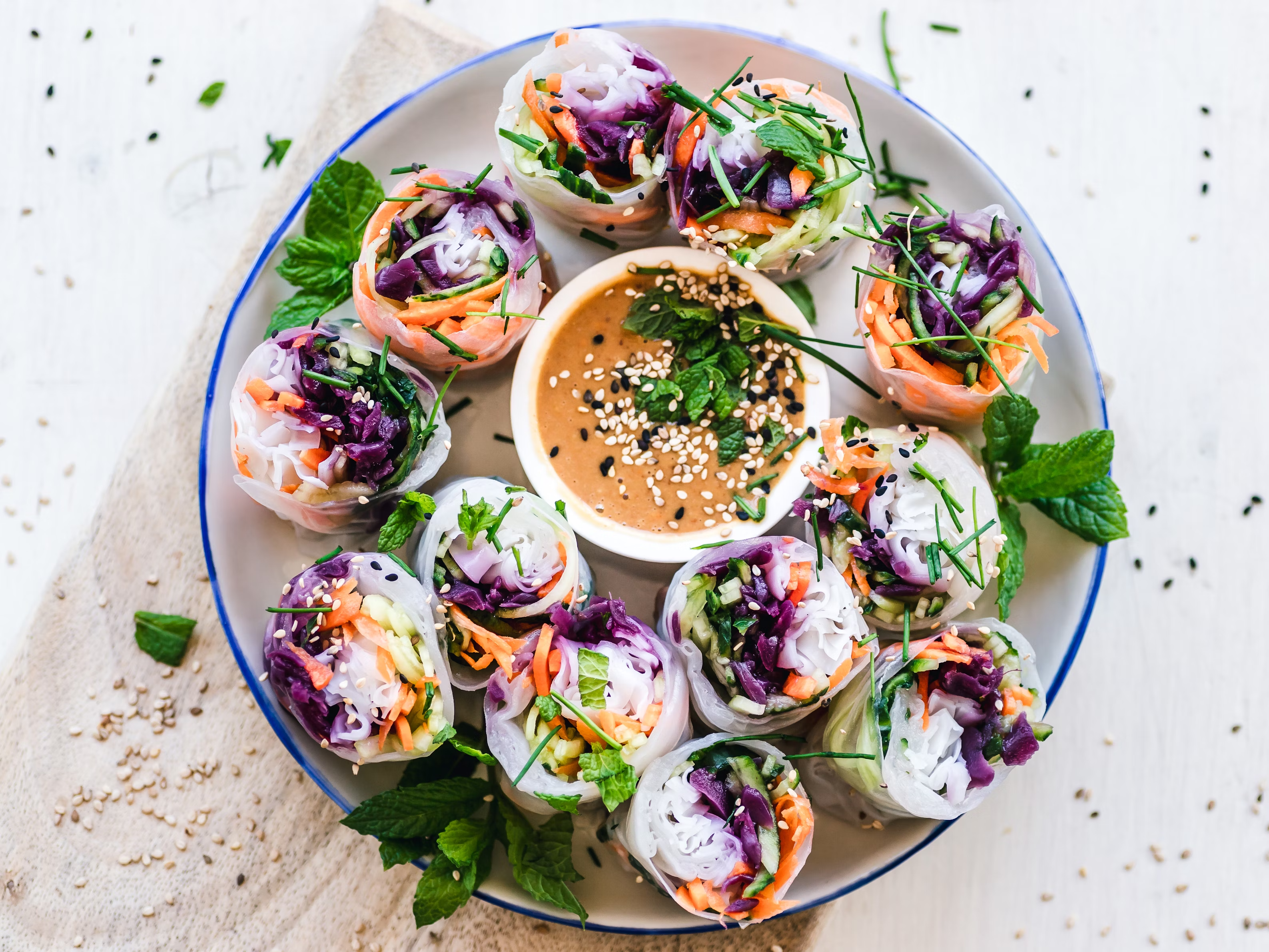Rice Paper Rolls: Low-Cal Hack Revealed
Rice paper rolls, a traditional Vietnamese appetizer, offer a light and healthy option for those monitoring their calorie intake. Typically filled with a combination of vegetables, herbs, protein, and sometimes noodles, these rolls are wrapped in a translucent paper made from rice flour. The caloric content of rice paper rolls can vary depending on the fillings, but the rice paper itself is relatively low in calories. An average rice paper roll wrapper contributes only a small amount to the total calorie count of the roll, making it a favorable choice for health-conscious individuals.

Rice paper rolls, a traditional Vietnamese appetizer, offer a light and healthy option for those monitoring their calorie intake. Typically filled with a combination of vegetables, herbs, protein, and sometimes noodles, these rolls are wrapped in a translucent paper made from rice flour. The caloric content of rice paper rolls can vary depending on the fillings, but the rice paper itself is relatively low in calories. An average rice paper roll wrapper contributes only a small amount to the total calorie count of the roll, making it a favorable choice for health-conscious individuals.
Understanding the nutrition of rice paper rolls is essential for maintaining a balanced diet. These rolls are not only low in calories but also often contain a variety of nutritious ingredients that contribute to a well-rounded meal. The rice paper wrapper's low calorie count allows for more flexibility in the choice of fillings without significantly increasing the overall calorie content. In addition to the caloric content, it's important to consider the macros and micros of each component within the roll to appreciate the full nutritional spectrum they offer.
When considering rice paper rolls as part of a meal, it's beneficial to recognize their versatility. They can be packed with fresh, raw veggies, lean meats, or tofu, making them a customizable and interesting option for various dietary preferences and requirements. While it's important to acknowledge the calorie aspect, one shouldn't overlook that Vietnamese rice paper rolls can be a flavorful way to incorporate more vegetables and lean proteins into one's diet.
Nutritional Profile of Rice Paper Rolls
Rice paper rolls are a dish known for their versatility and potential health benefits, providing a balance of macronutrients with the ability to cater to various dietary preferences.
Caloric Content and Macronutrients
Calories: The calorie count for rice paper rolls varies. A standard rice paper roll may contain between 85 to 120 calories per roll, with this range largely depending on the fillings.
Macronutrients: Typically, rice paper rolls consist of carbohydrates, moderate protein, and low fat content. The exact macronutrient distribution can change, but a usual nutritional breakdown might look like this:
- Carbohydrates: Constituting the main macronutrient, with around 18 grams per serving.
- Protein: They can provide a significant protein content if filled with ingredients like chicken or shrimp, with some rolls having up to 26 grams of protein.
- Fat: Generally low in fat, with most coming from fillings like sesame oil or peanut sauce.
Vitamins, Minerals, and Other Nutrients
Rice paper rolls include a variety of vegetables like carrots, lettuce, cucumber, and cabbage, all of which contribute to the overall nutrient profile. They often provide dietary fiber, though the amount is contingent on the specific vegetables used.
Micronutrients:
- Vitamins: These rolls can be a source of vitamins A, C, and K, especially when filled with leafy greens and herbs such as cilantro, mint, and basil.
- Minerals: Ingredients like shrimp add minerals like iodine and zinc, while the dipping sauces can contribute sodium.
Variations in Ingredients and Their Impact
The versatility of rice paper rolls means that the nutritional profile can vary significantly. Ingredients like tofu, rice noodles, or different types of fresh herbs can alter the balance of macronutrients. For example, adding rice noodles increases the carbohydrate content, while tofu enhances protein. Soy sauce and hoisin sauce can increase the sodium content, whereas peanut sauce may add additional fat and calories. It is important for consumers to consider the impact of these ingredients on the overall nutritional value of the rolls.
Preparation and Serving Suggestions
Rice paper rolls, often served as an appetizer, are a staple in Vietnamese cuisine known for their fresh flavors and versatile fillings. Crafting these rolls is an art that balances texture, taste, and nutritional value.
Traditional Rice Paper Rolls Recipe
To prepare traditional Vietnamese rice paper rolls, also known as gỏi cuốn or fresh spring rolls, start by hydrating rice paper wrappers in warm water until they become pliable. Lay out the softened wrapper and in the center, place a bundle of ingredients including vermicelli noodles, prawns (if non-vegetarian), mint leaves, bean sprouts, and butter lettuce for crunch. For extra freshness, add cilantro and cucumber slices. Carefully roll the wrapper, tucking in the edges to envelop the filling.
Accompaniments and Dipping Sauces
An essential part of enjoying these rolls is pairing them with the right sauce. Typical dipping sauces include peanut hoisin sauce and a Vietnamese dipping sauce made with fish sauce or tamari for a gluten-free option, mixed with rice vinegar, fresh lime juice, sugar, and garlic. For an extra kick, garnish the sauces with green onion. These sauces enhance the flavor while contributing minimal additional calories.
Healthier Alternatives and Dietary Considerations
For those seeking a low-calorie option, substituting prawns for tofu or more vegetables like avocado can reduce the calorie count. Using tamari can cater to those with gluten sensitivities, while opting for sugar substitutes or reducing the amount of peanut butter in sauces can lessen sodium and caloric intake. Fresh herbs such as mint and cilantro add flavor without excess calories, making them a smart choice for health-conscious individuals or those adhering to a vegetarian diet.
Want more posts like this?Sign up for our FREE newsletter →